Immersive Experiences
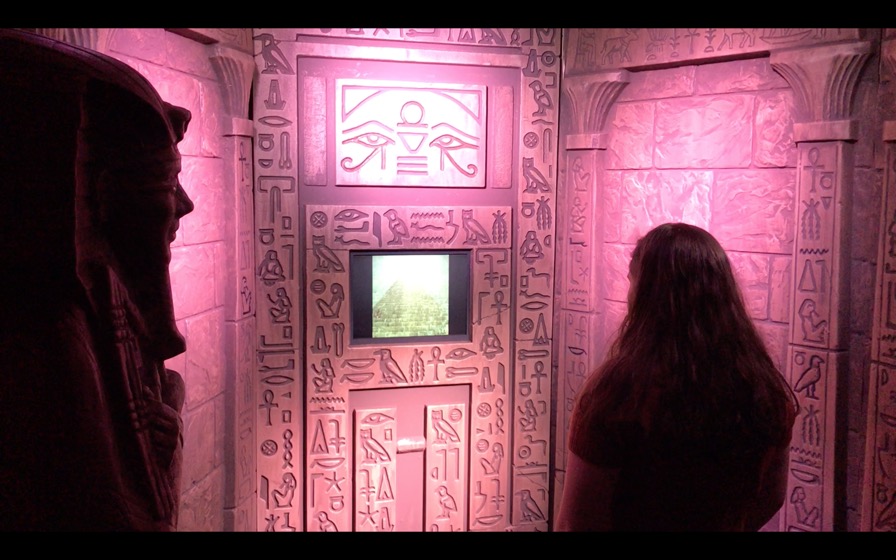
I produced content for an educational experience designed for an Egyptian tomb set.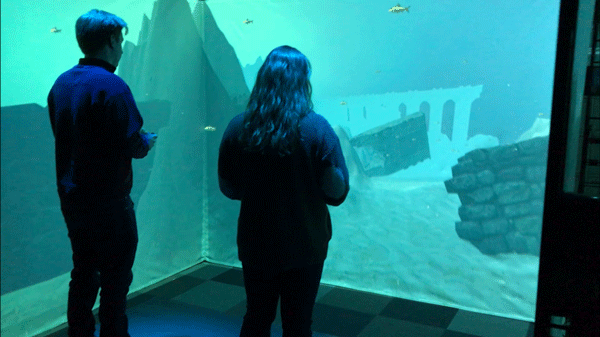
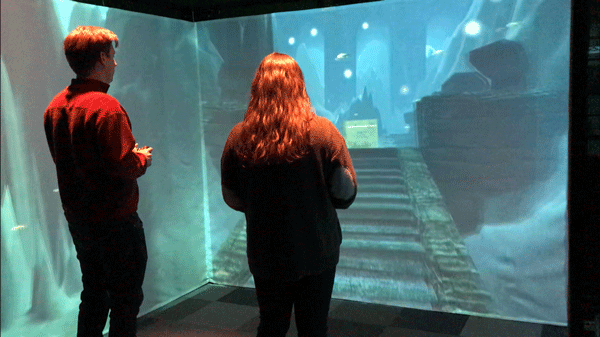
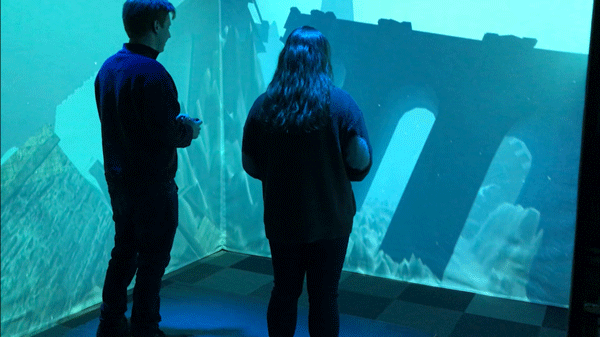
Additionally, I designed a collaborative game produced for the CAVE where players communicated with each other to traverse an underwater environment. The story involved mythology surrounding Merlin and finding his spellbook which I modeled in MAYA. I also designed the layout of the 3D environment in UNITY.
Creative Content
In addition to generating content for Animatronic Shows & Extended Reality experiences, I have applied my comprehensive knowledge of storytelling to traditional theatrical works and digital experiences.
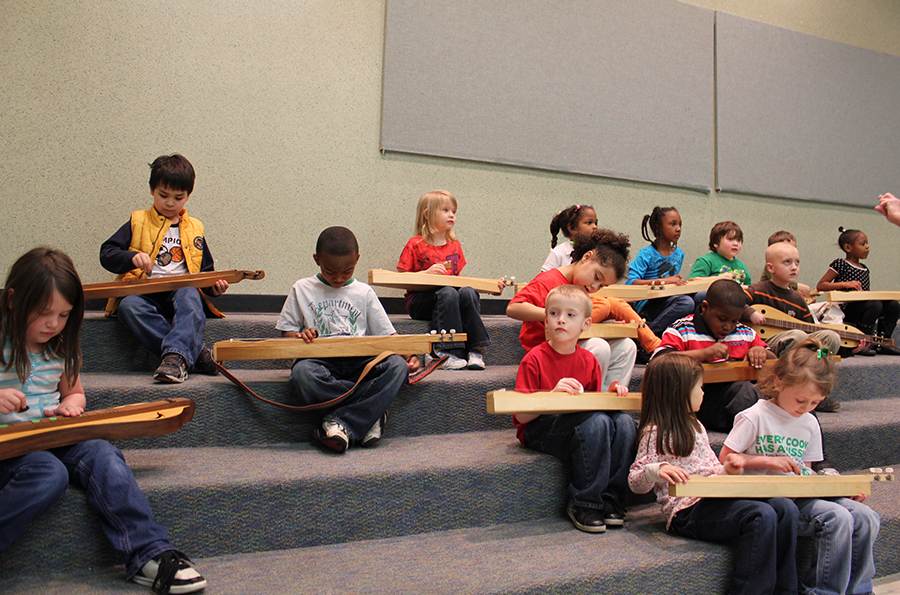
Developed an engaging musical program for young audiences
From writing grants, academic & research papers, to entertainment spectacles; I am proficient in delivering concise and articulate content for a diverse audience.
GKTWScript1
GKTWScript2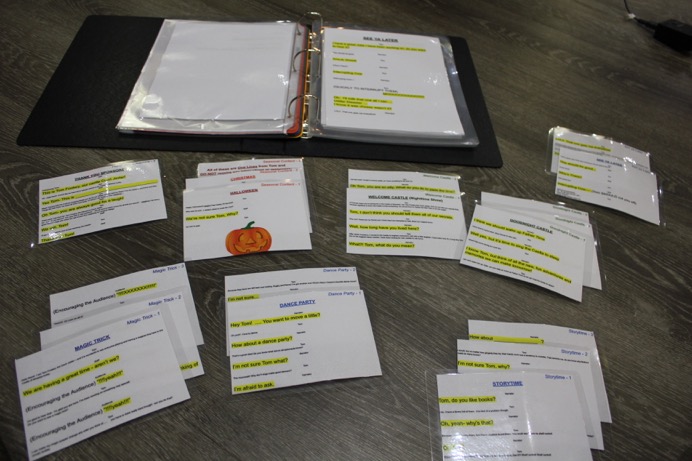
Cue cards and script for Tome Foolery Show
From 360* VR movies to abstract performative pieces, deriving compelling narrative for audiences excites me. In addition to generating my own content, I love working with a client's intellectual property to develop new opportunities to bring characters and their stories to life.

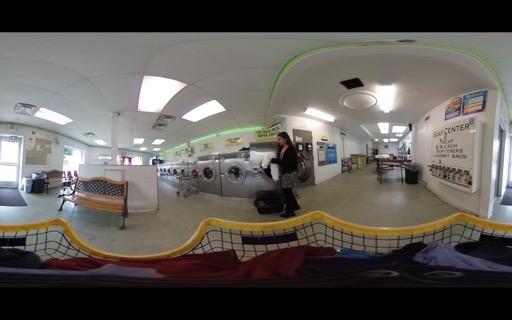
Stills from 360* Short
Blind Shadows Still
Blind Shadows
360* Video (Developed and filmed over a week)
Music Video (Developed & filmed over a weekend)
Give Kids The World - StarDesk
Duration: 10 Weeks
Platform: Physical Installation [MR]
Client: Give Kids The World Village - Orlando, FL
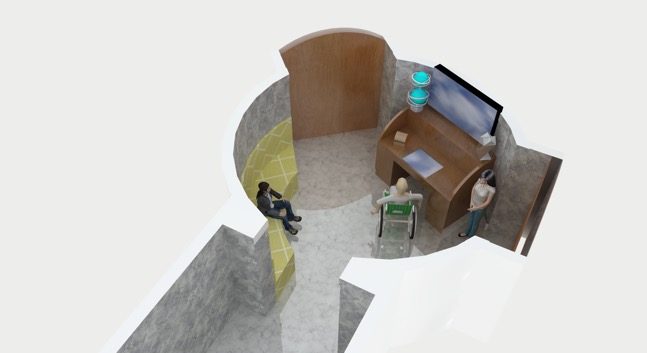
Give Kids The World Village is a nonprofit resort located in central Florida that provides children with life-threatening illnesses and their families week-long vacations at no expense to them. In the summer of 2018, I was granted an endowment through the Entertainment Technology Center at Carnegie Mellon University to work with a nonprofit of my choosing. I utilized this endowment to playtest the Tom Foolery Animatronic show interface and develop new experiences for the Village.
The Star Program at GKTW is one of the most utilized and poignant entertainment offerings at the Village. Each child is given a star to personalize and then through "magic" the Star Fairy, places their star in the sky at the Castle Of Miracles. Operationally, there is a problem as the Castle of Miracles is running out of space for each of the stars and the technology used to make this magic happen is slowly becoming obsolete.
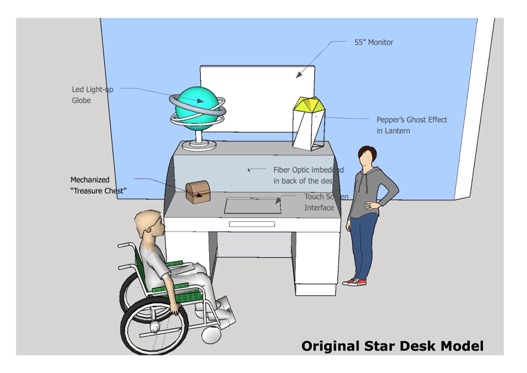
In response to running out of space, GKTW has developed the Star Observatory where the stars are placed on panels for initial viewing and then rotated out to storage until the family returns to see the star again. The Observatory is beautifully themed and solves this underlying problem for the future.
I was tasked with envisioning a new procedure for the Star Fairy to collect the child's star after they decorate it. Previously, the child would place the star in a treasure box and the Star Fairy would appear on a series of monitors to then take the star to then place in the sky later that evening so the family could then return later in their trip to view in the "sky."
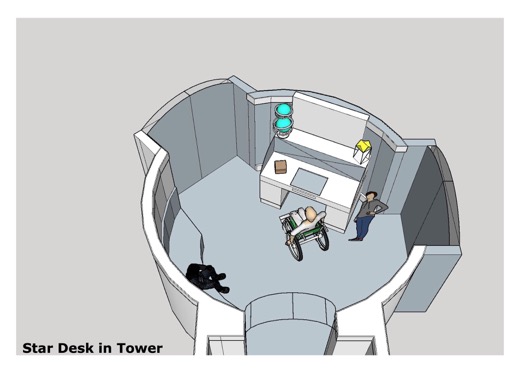
As mentioned, the technology was becoming antiquated and the process clunky at best. Children of varying abilities need to have the same experience and the way the chest was designed, not all children could place their star in the treasure chest. To decorate the star they would also employ different processes.
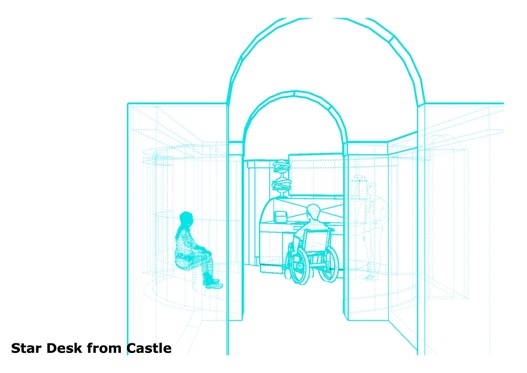
I envisioned a Star Desk, which would be placed in the underutilized Star Tower to mirror the theming in the Star Observatory. I wanted to update the experience utilizing different kinds of technology, but rely on robust and tried and true tech solutions to minimize future maintenance problems.

The solution I came up with is a kiosk in the form of a desk that would allow guests of all abilities to approach it and decorate their star. After decorating, the guest would then place it in a treasure box reminiscent of the original experience that would rock back and forth as the Star Fairy collects it. 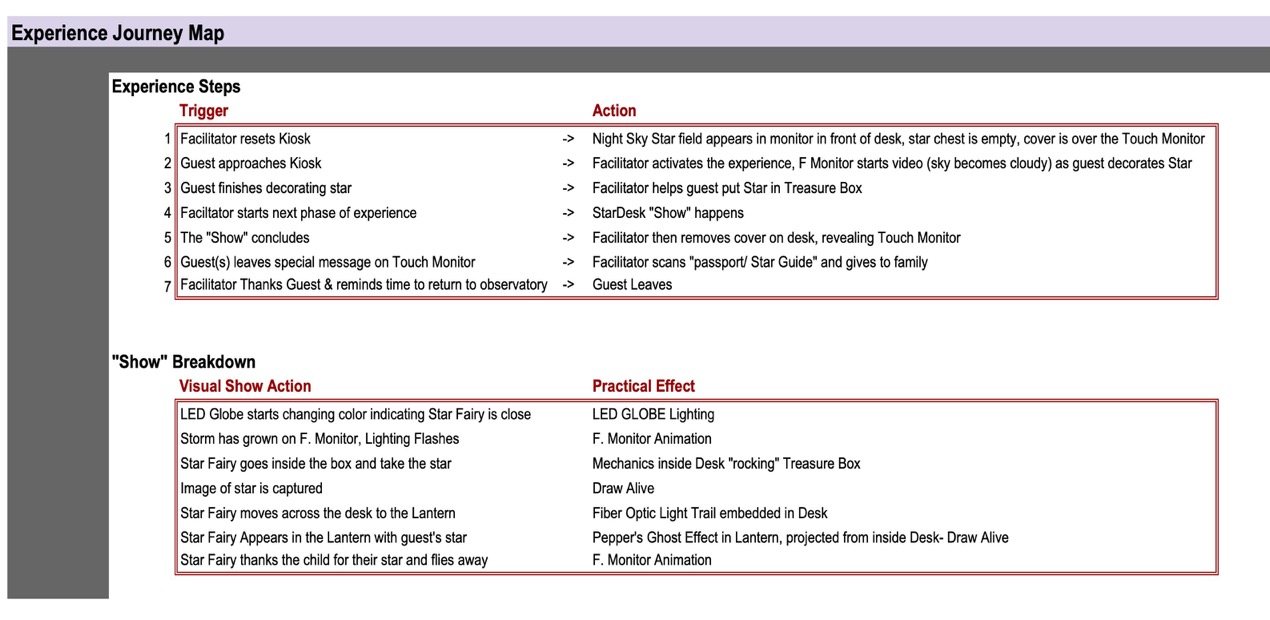

I originally imagined seeing the Star Fairy take the star by means of projection mapping, but after determining the finalized installation space, there is nowhere to seamlessly hide the projectors, and it would add additional maintenance headaches with changing the bulbs, etc. The solution I narrowed in on is using a fiber optic trail to track the fairy as she flys out of the monitor, collects the star, and then moves into a lantern placed on the desk.
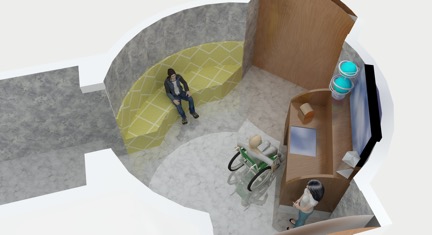
The Star Fairy would appear in the lantern through a "pepper's ghost" effect holding the child's personally decorated star. After running tests, I found that it would be possible to capture an image of the reflective star after they placed it into the treasure chest, giving even more believability to this very magical experience.
The fairy then would fly off back into the monitor disguised as a picture portal to the sky for her to place the star later that evening. I pitched the project to the client and they are very enthusiastic about implementing the desk concept, and it is currently in an RFP process with vendors.
Give Kids The World - Animatronic
Team Size: 7 (Josh Danzig, Rajat Gupta, Niharika Jain, Raisa Chowdhury, Alexandra Gobeler, Atul Goel)
Duration: 30 Weeks
Platform: Animatronic Figure [MR]
Client: Give Kids The World Village - Orlando, FL
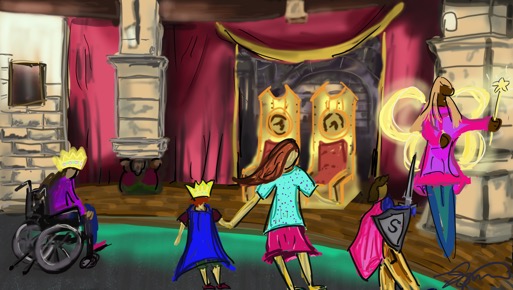
Miracle Workshop was a partnership between Carnegie Mellon's Entertainment Technology Center and Give Kids The World, a nonprofit resort located in central Florida that provides children with life-threatening illnesses and their families week-long vacations at no expense to them. GKTW tasked our team of seven to take an existing puppet, "Tom Foolery," and retrofit him to become an audio-animatronic figure that performs in experiences such as storytime.
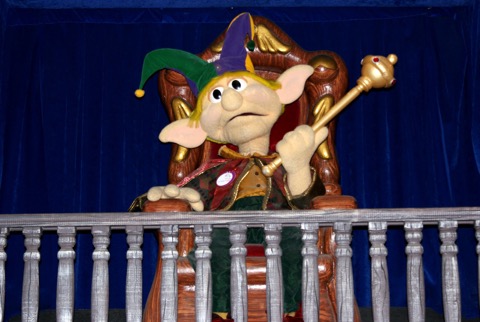
As Creative Director & Producer, I was charged with developing the creative content, overall vision, and production process of the project. I utilized my expertise in live entertainment to create captivating content for the guests at Give Kids The World Village: developing a character profile, writing the scripts, casting the voice talent, directing & recording the audio session, setting the audio cues, and directing the show experience.
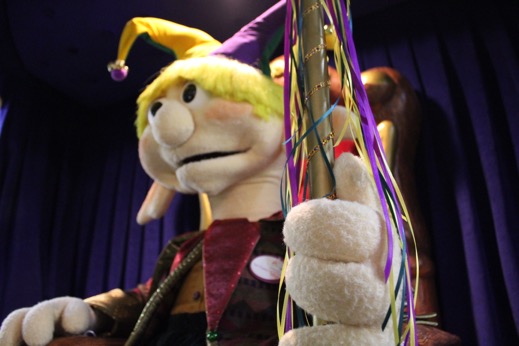
When the team hit a roadblock with determining what kind of functions our animatronic was to have, I worked with the engineering team to define the functions based on Tom's character profile. I worked with the client to make sure that our experience would hit all of the metrics desired and make sure the mythology would be consistent with other entertainment offerings.
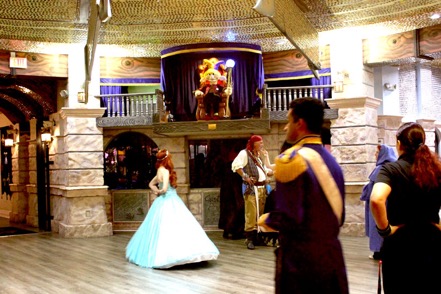
In addition to maintaining the overall vision for the show, I worked with the design team on the mechanics for the animatronic. I facilitated engineering work with our various vendors and utilized my expertise in biomechanics to pinpoint the appropriate range of motion for each of the animatronic figure's five functions. By recording humans performing similar actions, I calculated the ROM for each movement and then passed that data on to our lead designer for implementation in the mechanical design.
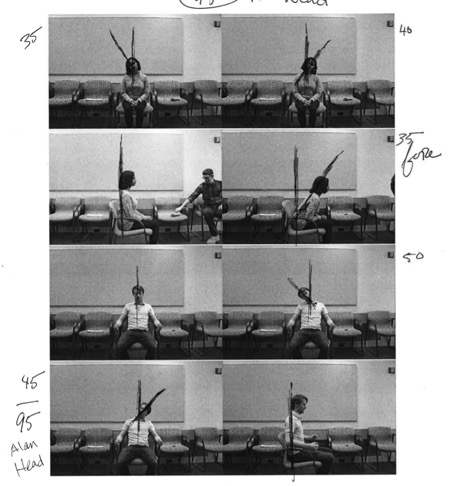
I worked with each of our team members to make sure that Tom would be robust and withstand the rigors of daily operation. Since Give Kids The World is a volunteer-based organization, having the staff generate content in real-time is not feasible. I took their operational demands and distilled them into content that would be appropriate for various times of the day. From jokes in the afternoon, a good night show that runs in tandem with an existing animatronic, to a show that thanks the various sponsors of GKTW, and more; I synthesized and anticipated the client's current and future needs. I also produced seasonal content to give Tom even more implied awareness and keep the content fresh throughout various times of the year.
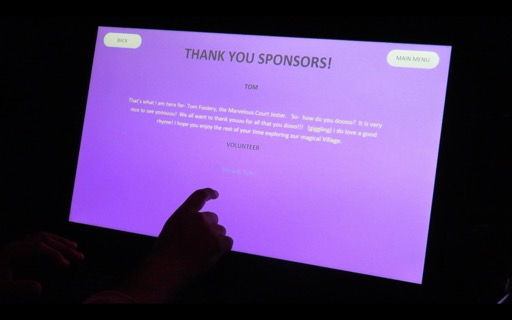
The content then runs off of a large touch screen monitor in the back of the house. To create the illusion that Tom is interacting with the children and guests in real-time, staff facilitates the "performance" of Tom in the front of the house. They have the option of using cue cards to read their lines so the barrier to running the sophisticated animatronic show is extremely low and requires little training. This was imperative for the success of the project as the client does not have the bandwidth for intensive training or maintenance.
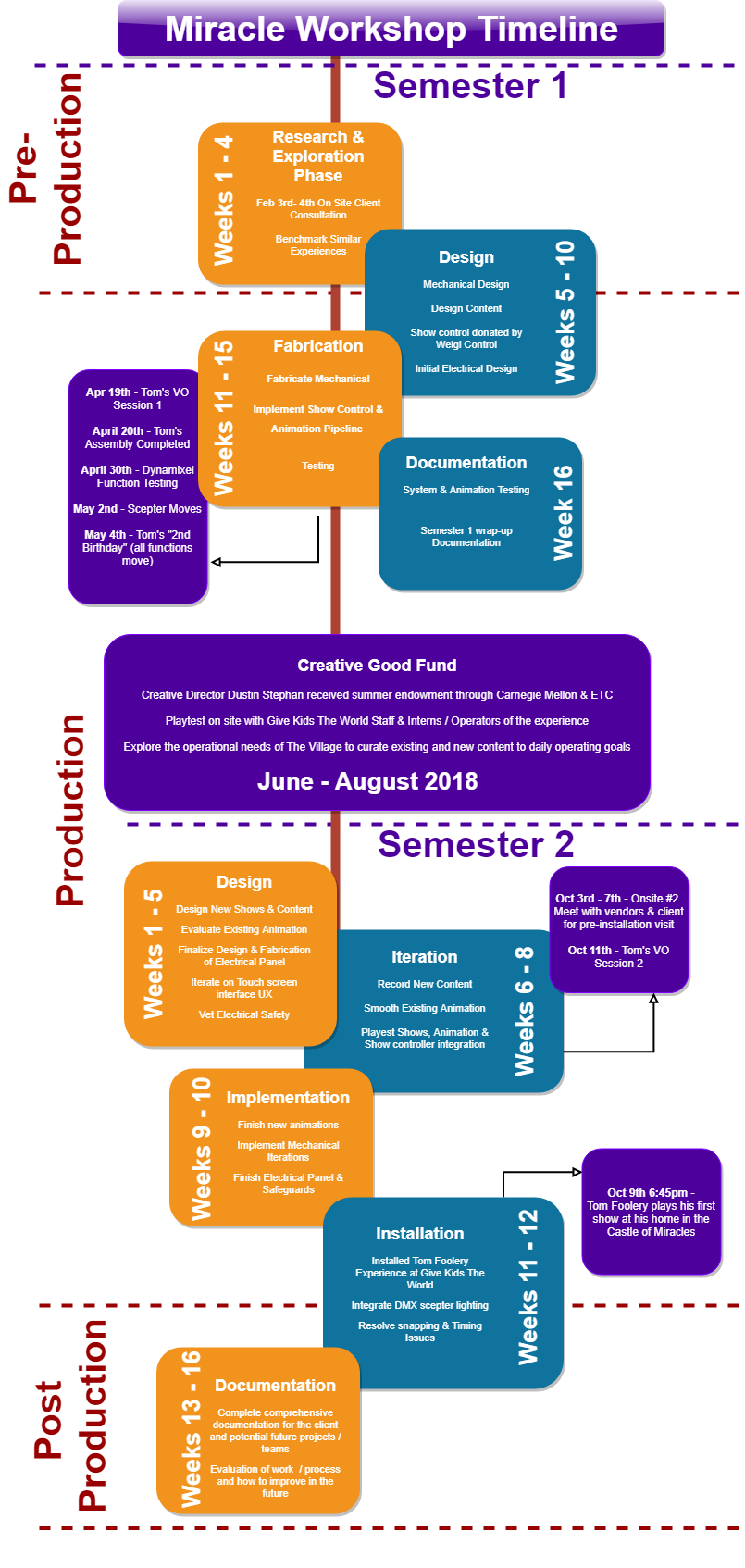
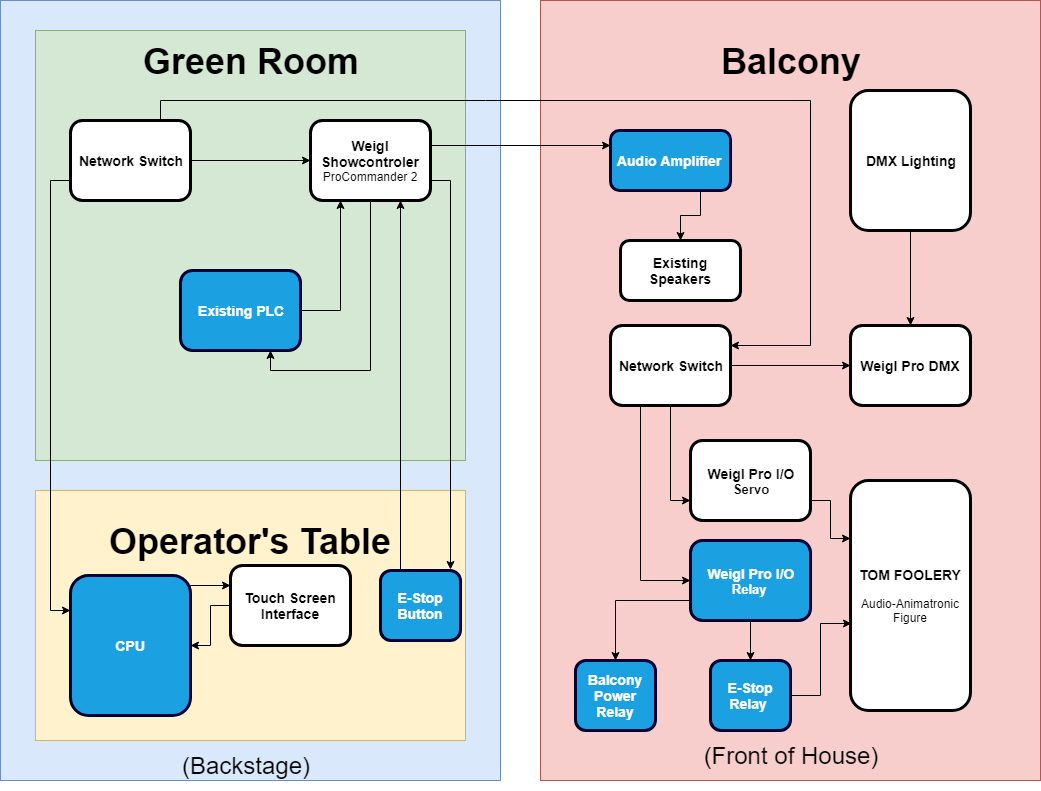
I maintained the production timeline to keep the project & installation on time and within budget. I worked with the technical director to create technical documentation including a block diagram to facilitate communication between our team, client, and vendors.
This just scratches the surface of all of the work I helped the team with. I also designed his new scepter and reached out to industry professionals to help fabricate the finished product. His animation was developed utilizing new industry processes of using MAYA and 3D animation software to animate the figure and then convert the data into signals to be read by the show controller. I worked hand in hand with each team member, industry experts, our vendors, and the client to develop a successful installation for a very deserving demographic.
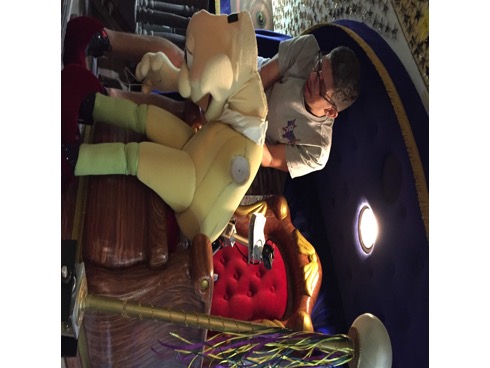
To read more about our animatronic, please view our project websites:
Miracle Workshop Semester 1
Miracle Workshop Semester 2
VIDEO LINK (Composite)
VIDEO LINK (Content Sample)
MORE VIDEO CONTENT
Augmented Reality Spy Game
Team Size: 5 (Sahar Kausar, Ridima Ramesh, Guanghao Yang, Yuquiao 'Qiao' Zeng)
Duration: 2 weeks
Platform: Microsoft Hololens [AR] / [MR]
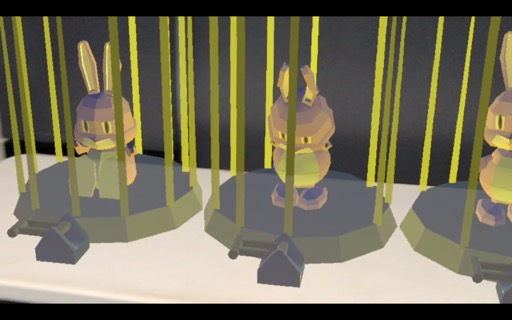
I was part of a team that developed an Augmented Reality [AR] Spy Game experience for the Microsoft Hololens platform. Part of the Building Virtual Worlds course at Carnegie Mellon's Entertainment Technology Center, the experience was designed and built in a two-week rapid prototype and iteration process.

With my background in movement, I envisioned an experience where guests would traverse through a digital environment overlaid on top of the physical space. Guests would take on the role as a spy utilizing clues to solve puzzles (like deactivating lasers) in the game.

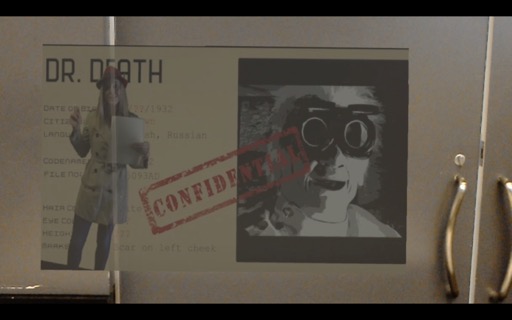
I aided to the overall puzzle design and produced video content that is played through the Hololens that created a holographic-like effect. In addition, I developed the audio content for the experience. I lent my experience in production especially in developing the video content and keeping the project on track given our short timeframe.
VIDEO LINK
Samurai Siege
Team Size: 5 (Yujin Ariza, Jacob Wilson, Cheung Tai Ching, Kangyan Li)
Duration: 2 weeks
Platform: HTC Vive [VR]
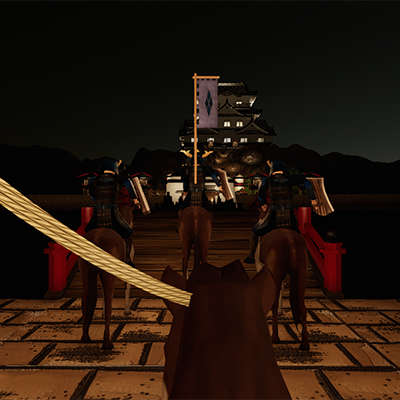
Samurai Siege was a Virtual Reality [VR] experience implemented on the HTC Vive platform. It was conceived and built over a two-week rapid prototype and iteration process by a team of 4 for Carnegie Mellon's Entertainment Technology Center's Building Virtual Worlds course.

I served the team as a designer and added production support to the project, helping facilitate playtest research that we used to inform the final activation.
The experience was aided with a physical rocking horse prop that is part of the collection at the Entertainment Technology Center. Naive guests are placed on the horse and given a shield with no further direction. They enter the virtual environment and use the shield to block arrows hurled at them.
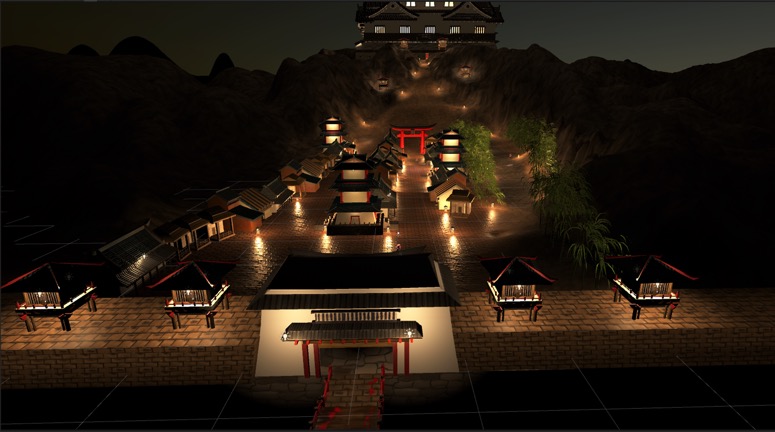
In addition to the previously mentioned expertise; I contributed to the mechanics of the experience, overall level design, and recorded & composed all of the audio to develop a truly immersive experience.
The tempo of the audio increases as guests progress through the castle to heighten the excitement.
VIDEO LINK
The Gallery
Team Size: 5 (Ruili Tang, Mohan Bai, Qianye 'Renee' Mei, Xuejun Wang)
Duration: 2 weeks
Platform: HTC Vive [VR] / [MR]

The Gallery was a Virtual Reality experience built for the HTC Vive platform. It was a location-based experience with the virtual space mapped 1:1 with a physical themed room.
As Creative Director, Producer, & Designer; I led the overall vision for the Virtual Reality experience. Part of the Building Virtual Worlds coursework at Carnegie Mellon's Entertainment Technology Center, the experience was designed and built in a two-week rapid prototype and iteration process.
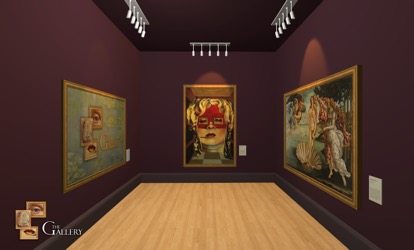
I envisioned an experience in a digital environment where guests could interact with and walk into famous works of art. With my background in performance art, I wanted an experience where guests could have agency to traverse and locomote throughout the environment to "fix" paintings and interact with the artwork.
In the final activation, guests would enter the room themed to a museum gallery. Two paintings were prominently displayed: Birth of Venus by Sandro Botticelli and Mae West's Face which May be Used as a Surrealist Apartment by Salvador Dali.

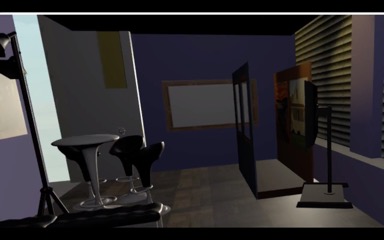
Guests would put on the HTC Vive Headset and be transported to a virtual environment matching the physical one they are standing in. The lights flicker and the paintings are now awry. Guests can transport into the works of art and through a series of interactions are able to "fix" the paintings as they come alive in 3D.
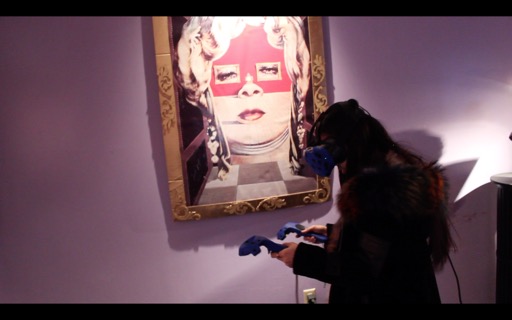
The experience was very well received and showcased at the Entertainment Technology Center's Festival. I ran the production for the experience, making sure the environments matched by facilitating work between the artists, programmers, and ETC building staff. Additionally, I built props and was responsible for the audio in the activation.
The project also received press, which can be found here; And on my Press page.
VIDEO LINK (original build with audio)
VIDEO LINK (BVW Festival Composite video / no audio)
Design
In addition to scenic and attraction design, I have designed virtual environments and sophisticated mechatronic experiences. I currently have a robust animatronic installed at Give Kids The World Village in Orlando, Florida. I am also capable of interactive experience level design and DMX lighting protocol and programming.
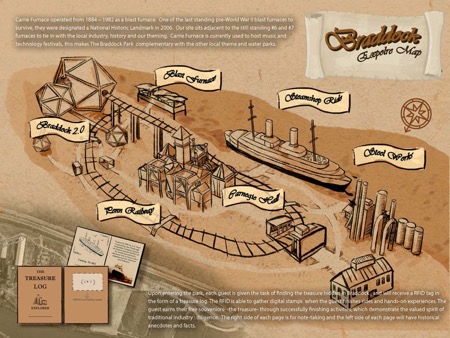
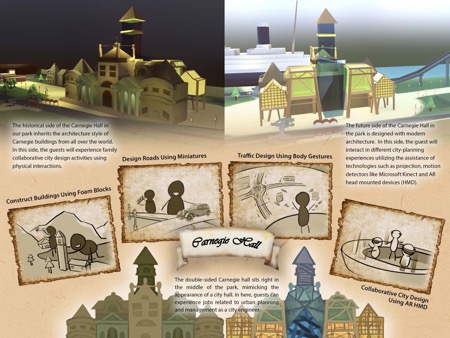
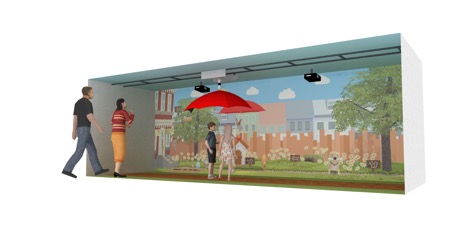



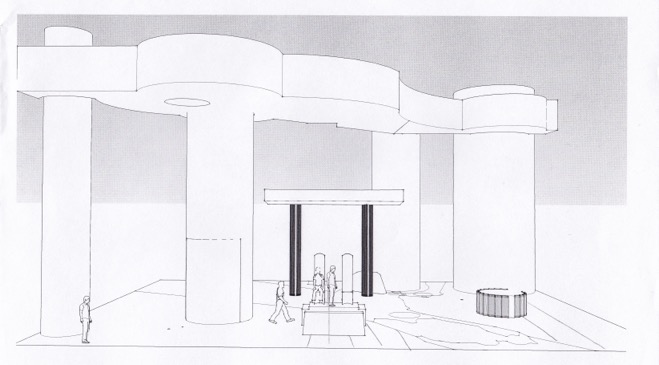


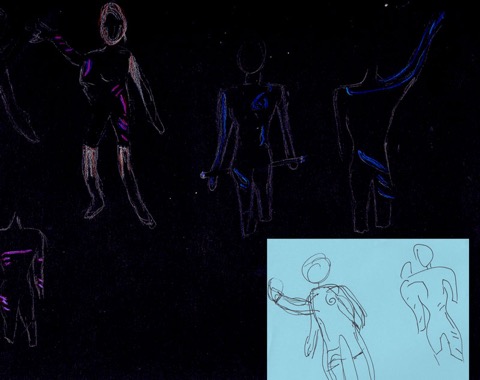

Educational Escape Room
Duration: 15 Weeks
Platform: Physical Prop Puzzle & Prototypes
Client: Cleveland Museum of Natural History - Cleveland, OH
In the Fall of 2018, I worked as a Research Assistant with the Human Computer Interaction Institute at Carnegie Mellon University. This project was in collaboration with the Cleveland Museum of Natural History to explore what Escape Rooms would look like in a traditional "Academic Institution" setting.
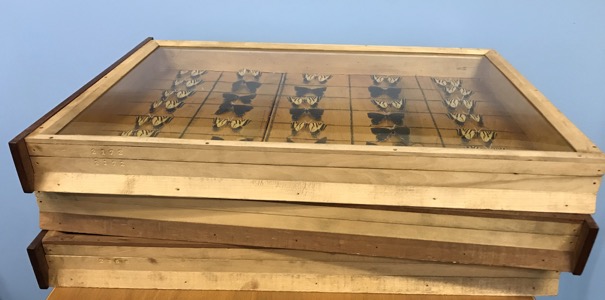
I designed a series of puzzles that were the starting off point for a future project at Carnegie Mellon's Entertainment Technology Center. One of which was a butterfly puzzle that guests would use factual butterfly entomology as a way to correctly place the butterflies as a means to discover the next clue.

I printed accurate butterfly depictions of various families on vellum then cut them to size and placed them in specimen trays. The guest would have to use clues on given classification sheets to make sure the butterflies were positioned correctly in order to discover a pattern revealing a number.
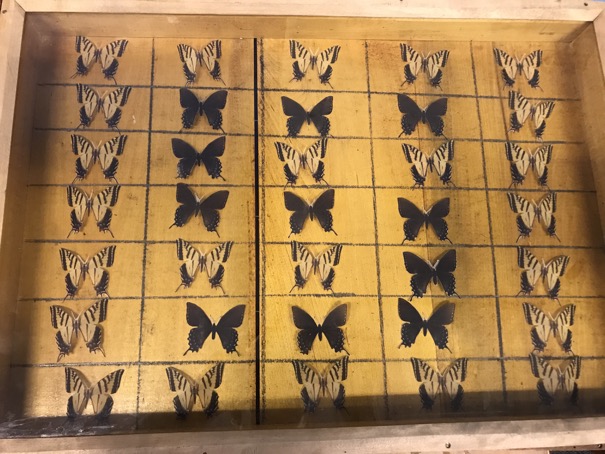
This research was a proof in concept to see if an experience based on educational knowledge would be entertaining enough to become a viable project. The following is a short summary of my findings:
"Escape rooms have become popular location-based experiences where individuals or groups work to solve puzzles in order to advance through gameplay. Aside from overarching thematic elements, these experiences rarely have a narrative that propels the play forward; instead relying on a series of puzzles that may be fun or interesting but have little correlation with each other or the meta storyline the guest has been asked to follow. Oftentimes, these narratives are hardly more than a sentence or a command: “Find the mad scientist’s antidote;” “Break the mummy’s curse;” “Help us find the murderer.”
By investigating how guests interact with each other and the puzzles composing the experiences, designers can create more engaging, captivating, and comprehensive experiences that serve the overarching narrative of the storyline that opens up the possibility for content that builds upon itself. By doing so, guests have the opportunity for impactful learning opportunities rather than a series of superficial brain teasers which can get repetitive.
Allowing for the opportunity for the guest to insert themselves into the storyline and have the puzzles inform the narrative and visa versa can open up the experience to be more immersive and engaging. In role-play, guests actively take on a character transformation through improvisation. In situational puzzle-solving, taking on an activity that is directly correlated to the overarching narrative in this engaging manner could be used to approach educational topics.
By framing one of these escape rooms, or situational puzzles around an educational topic or domain - learning objects could be reinforced through strategic puzzle design. Designing puzzles with layers that enhance learning in a specified subject matter could engage the public in spaces like libraries and museums by creating installations or spaces that draw in demographics looking for shared puzzle experience.
The trick then is to design puzzles that aren’t transparent in their educational tone. In order for the guest to be engaged, they need to be challenged. The puzzles should align with or propel the narrative forward in a way that is surprising. Providing a series of challenges that are similar in style or tone will be monotonous and eventually become easy for the guest to solve.
There is an opportunity to design situational puzzles with advancing clues that follow narrative devices to transmit learning objectives. By immersing the guest as an active role player, academic-oriented experiences could be transformative and fun. There is an uptick for location-based puzzle experiences in social contexts, by tapping into the current trend aging academic institutions could draw in new visitors and the next generation of patrons to utilize their resources. "
Children's Museum of Pittsburgh
Team Size: 5 (Daryl Choa, Min Pan, Weidi Tang, Jinyi Ye)
Duration: 15 Weeks
Platform: Physical Installation & Digital 3D environment [XR] / [MR]
Client: Children's Museum of Pittsburgh - Pittsburgh, PA
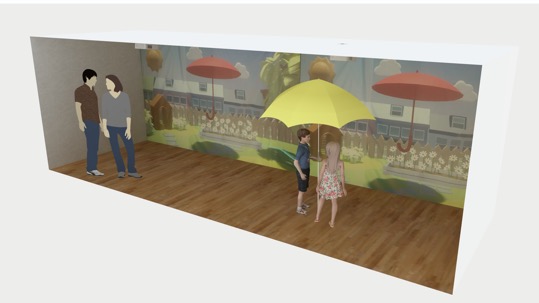
One Small Act was a collaboration between the Children's Museum of Pittsburgh and Carnegie Mellon's Entertainment Technology Center. The Museum has an initiative based on having children practice Qualities of Kindness. As part fo this initiative, they are retrofitting their current "Attic" exhibit Space into a new 1,200 square foot gallery loosely based on Fred Roger's Neighborhood and Kindness. The museum tasked my team to envision a new installation for this exhibit.
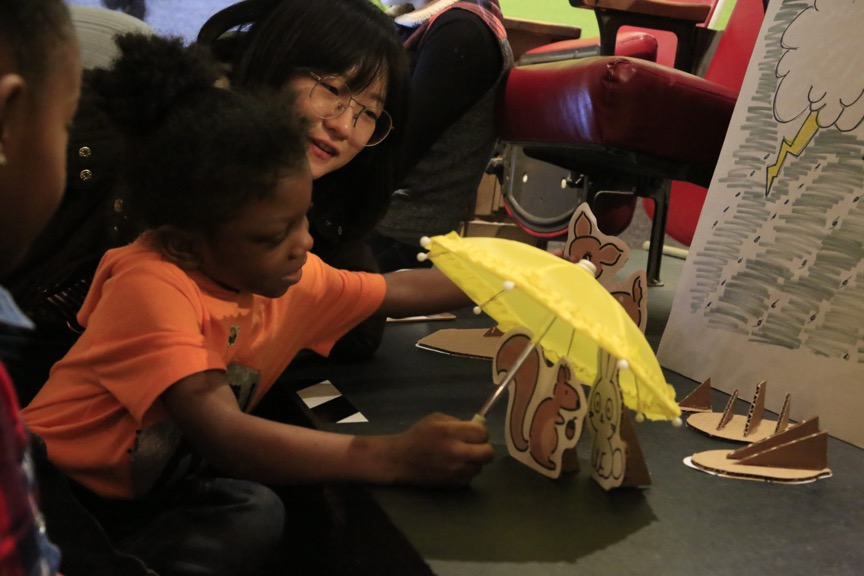
Playtesting with paper prototypes
As Creative Director and Producer for my team, I held the creative vision for the project while being a conduit of communication between the team and client. I also lent my expertise in design to shape the experience for guests.

Although the museum initially wanted a Virtual Reality experience; with the target demographic being children 0 - 12 (really 5 - 8), we quickly determined that would not be a compelling experience especially given the directive from the client that the installation should spark dialogue between caregiver and child.
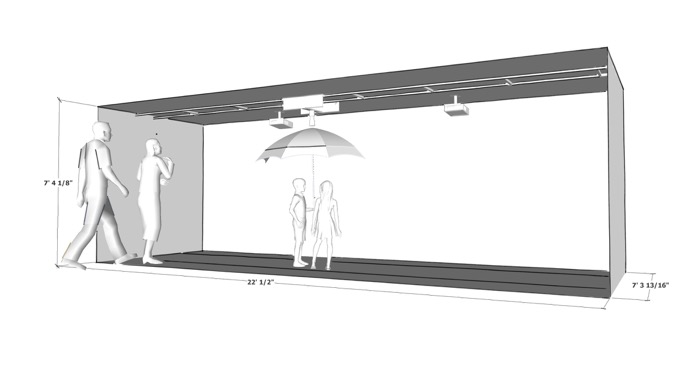
We wanted the experience to be communal, so landed on a Mixed Reality experience combing physical props with digital elements. The inspiration was based on the imagery of a stranger holding an umbrella to shelter someone from the rain. We used this as a starting off point and quickly imagined a scenario where sheltering animals from the rain would be a compelling experience for children.
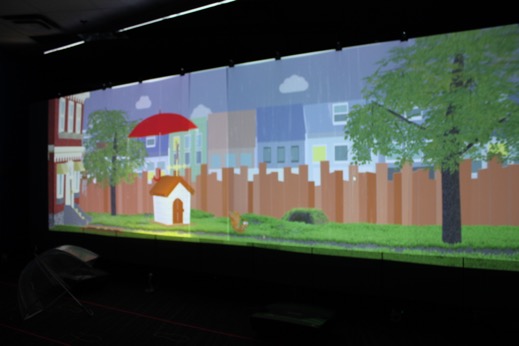
The installation will utilize a large oversized prop umbrella on a linear track that is matched 1:1 with a digital umbrella that the guest will control to enact qualities of kindness. Since we cannot control the entry and exit points of guests in the museum; The experience is non-linear, with a sunny day to rainy day cycle on a loop.
I facilitated the communication between the programmer and the fabricator at the museum to make sure installation will be seamless. I kept the production on track while carrying the creative vision and making sure all of the digital and physical elements fit our installation and the exhibit as a whole.

Prototype setup at the ETC with VR tracker attached to an umbrella
I procured the technology to playtest the experience using VR tracking hardware and short-throw projectors and utilized my design skills to create documentation showcasing all of the elements. I maintained the Google Drive, ran meetings, kept the budget and timeline in check, and developed all of the audio for the experience.
For information on the project, please visit the project website:
One Small Act
VIDEO LINK